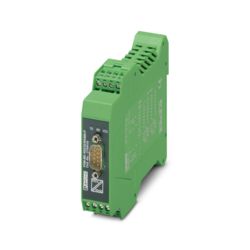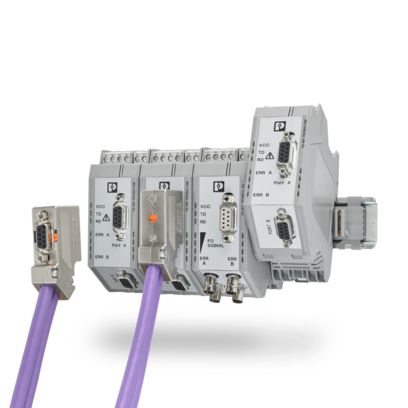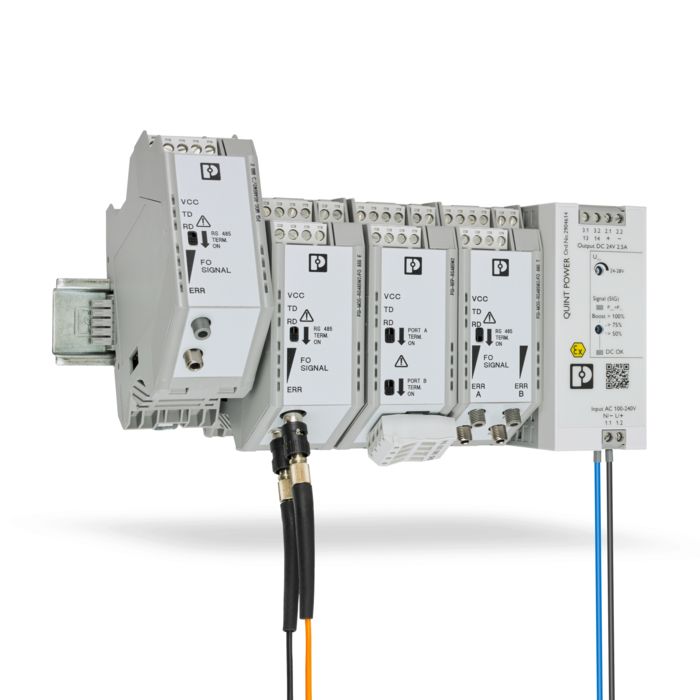
Interface converter, for converting RS-232 (V.24) to RS-422 (V.11) and RS-485, with electrical isolation, 2 channels, rail-mountable


Using fieldbus repeaters for PROFIBUS and RS-485 bus systems, you can extend your network over a wide area regardless of the data rate. Even the number of devices can be extended through segmentation with repeaters. You can increase the range, transmit without EMI, and extend and distribute channels as required. The modular concept supports any combination of copper and FO channels. Using the serial interface converters, serial interfaces such as RS-232, RS-485, RS-422, and TTY can be converted from and to these formats in order to connect different devices.

Interface converter, for converting RS-232 (V.24) to RS-422 (V.11) and RS-485, with electrical isolation, 2 channels, rail-mountable

Repeater, for potential separation and range increase in RS-485 2-wire bus systems, 3-way isolation, rail-mountable

Interface converter, for the isolation of RS-232 (V.24) interfaces, 4 channels, rail-mountable

Modular repeater for electrical isolation and increasing the range for DeviceNet™, SDS, CANopen®, data rate of up to 1 Mbps, high-quality electrical isolation between the interfaces, DIN-rail mountable, 24 V DC supply

Modular repeater for electrical isolation and range increase for PROFIBUS up to 12 Mbps, 4-way isolation, rail-mountable, supply 24 V DC

Interface converter, for converting RS-232 (V.24) to TTY, with electrical isolation, 2 channels, rail-mountable

Active termination resistor for PROFIBUS and RS-485 bus systems, redundant power supply, routing of the supply voltage via DIN rail connector, electrical isolation, switchable termination, integrated programming interface

Modular repeater for electrical isolation and range increase in RS-485 2-wire bus systems up to 500 kbps, 4-way isolation, rail-mountable, supply 24 V DC

Repeater, for potential isolation and increasing the range in RS-485 2-wire LON bus systems, 3-way isolation, rail-mountable

Modular design
Copper repeaters for increased system performance:
The modular concept of the PSI-MOS devices also ensures the desired mix of copper and FO channels: the devices can be quickly and easily connected to each other via the DIN rail connector. This is how the cross-wiring for data signals and supply voltage is achieved.

Fieldbus repeaters
Using Phoenix Contact repeaters, you can extend your network over a wide area regardless of the data rate. Even the number of devices can be extended through segmentation with fieldbus repeaters. You can increase the range, transmit without EMI, and extend and distribute channels as required. The modular concept supports any combination of copper and FO channels.

Active termination with PSI-TERMINATOR-PB-TBUS
Actively terminate PROFIBUS and RS-485 networks with ease using the PSI-TERMINATOR-PB-TBUS.
This gives you important advantages:
You use the D-SUB connection to supply active programming and diagnostic devices with power. You can also use the device as a defined service interface within a bus system.